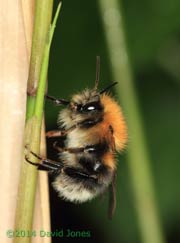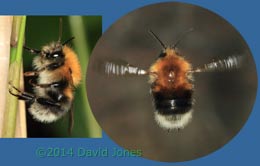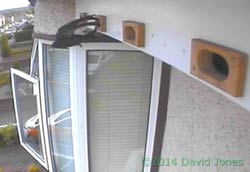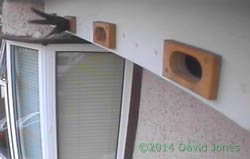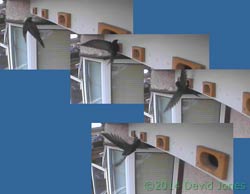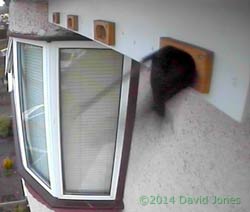Go to the last entry on this page .....Go to previous entry12 May - A bright, mainly sunny day, although the brisk breezes that were around throughout the weekend are still with us, albeit less blustery.
There has been no change in the status of the Swifts over the last few days, with the three pairs in residence each night and out most of the day, with just the odd feather is being brought into SW(le). Having said that, One of the pair from SW(le) brought in a feather just after noon today and then spent a while working on the nest.
At the end of the day, I thought it worth recording what the three nest sites look like a week after the return of the Swifts. A distinct circular area is developing in all three boxes, although so far it is little more than an outline in SW(up) which was empty when the Swifts arrived. There's no sign yet of any Swifts taking an interest in the boxes at the front of the house.
Thanks to Evan's vigilance I can confirm that there is at least one House Sparrow chick in SW(lo). My car is parked in the front garden alongside the Rosa rugosa hedge which is is growing furiously at the moment and is home for far too many Aphids. Anyway, Evan and I went into the car to look for something yesterday and he suddenly said 'Grandad, look!'. Less than a metre away from him was a female Sparrow collecting large aphids - at one stage we were close enough to see them in her beak. When she left the plants she headed up and into SW(up) to feed her offspring. He isn't with us today, which is a pity because I spent some time down the garden this morning trying to photograph some insect eggs on the tall Oak sapling (more about them later). I had to pause in my endeavors every few minutes and move a couple of metres down the path, when a quiet but sharp call told me that a Robin was waiting to pass me by as it took food (mainly small worms) into its hidden nest in the log store. On one of those retreats I watched a Tree Bumblebee (Bombus hypnorum) feeding at the Comfrey flowers. This is only the second year that I have seen this species in the garden. I must try to get some photographs of one.
Yesterday, while on one of our frequent bug hunts, Evan and I came across our first Oak Bush Cricket of the year, a nymph about 10mm long (excluding its antennae) on a Hazel leaf.
By coincidence, on the underside of the same leaf was this group of very small eggs, each measuring no more than around 0.6mm across.
Later, after Evan had left us, I was able to take a closer look to pick out some details. They varied in shape and condition, but all have these ridges running from top to bottom,
and some are damaged. There is no sign of larvae or nymphs having emerged from these cases so could they have been predated, or simply not fertilised?
On the underside of an Oak leaf is this much more compact group of eggs.
These measure just over 1mm across and are 1.4mm tall, and are attached to the leaf by a broad 'holdfast'.
Just below the top there is a ring of tiny white hairs(?) spaced at 0.1mm intervals and having an almost erect, club shape, although I could not get close enough to get a clear image of them.
You can see the rings from above in this image. The ring also marks a change in surface appearance between the main, roughly textured body of the case and a top section that appears somewhat smoother. The ring marks the plane along which the case will split when hatching takes place.
A number of the Oak sapling's young leaves appear to have attracted the attention of a different species of Gall wasp, in this case possibly one called Andricus curvator. The swelling that occurs starts at a vein and spreads, causing quite a bit of distortion to the leaf - these pictures show the same structure from above and below a leaf. The larvae develop within inner galls, this leaf appearing to have at least two.
13 May - A bright, sunny morning with the odd shower passing by. It's about 14C at 11am.
Just before one of those showers I managed a quick picture to include two firsts for 2014 - The first Speckled Bush-cricket nymph that I've seen here this year, and the first Field Buttercup, although the exposure is terrible for the latter. There was no chance of getting another shot as the cricket left and the rain arrived!
Tonight it's a case of 'One of our Swifts is missing' from SW(up). It's not unknown for Swifts to stay away like this so there is no need to worry yet. As I watched TV a bit earlier I saw that a pair of Swifts has now occupied a box (that I fitted) on a house across the road.
For the moment I have discontinued monitoring the House Martin boxes in order to concentrate on the Swift boxes at the front of the house.
This afternoon I installed a contact microphone in the roof of box 2. A small hole allows it to record sound directly from that box, but in addition the microphone will also pick up any movement that occurs in any of the four boxes, or at their entrances. This should help make monitoring easier in the absence of internal cameras. I have also placed a small amount of fine straw into each box, each time pushing it to the rear.
At the other end of mybitoftheplanet, and on a much smaller scale this is my first sighting this year of an structure that appears on the underside of low hanging Birch leaves each year. It is the egg case of the tiny spider you can see to the left of the picture.
On an adjacent leaf is this tiny sawfly larva that seems to be making a big impact on that leaf.
Hanging from a small Birch branch is this egg case. that looks more like a tangled ball of coarse twine surrounding a case of finer white silk. Previously I've come across just one other example of this in the garden. I'm sure I recorded it in the diary but so far my search has failed to find that entry.
14 May - On a very pleasant sunny morning it's a case of -
and then there were two once more in SW(up), as of around 9.15am.
During the day both birds visited the box and in the evening it seemed as though the pair were in for the night. However, after 8.30pm one appeared restless, heading for the exit several times before finally leaving at 8.53pm, leaving its partner alone for the night. Perhaps it was a coincidence, but five minutes later a Swift entered SW(1) at the front of the house.
SW(1) was also visited by a single Swift earlier in the day, while SW(up) was empty. Could this be the same bird? If I have time tomorrow (Evan will be with us) I must check the videos to see if at any time there are two Swifts in SW(up) at the same time that I see one entering (or leaving) SW(1).
15 May - A that gave a hint of the weather we would like to get in the summer, with sunshine and a temperature that rose above 20C, and with Evan here most of the day was spent out of doors with the largest number of frogs seen so far this year (although still very modest compared with previous years). The most impressive sight for Evan was a group of seven, piled on top of each other on a rock in the small pond. If you are a follower of the webcam you'll see that I've removed the view of SW(lo) with its blurred image (the Sparrows continue to feed their young in there) in favour of the exterior view of the front of house set of Swift boxes. I'm afraid that the chances that you will see Swifts in this image are relatively small as there are intervals of at least 3 seconds between image uploads, but the combination allows me to record SW(up) and SW(1) simultaneously to check on the problem I mentioned yesterday.
Well, confirmation that the visitor to SW(1) is not one of the pair in SW(up) came quickly after I rearranged the connections this evening. A Swift entered SW(1) at around 8pm, and then left again ten minutes later, by which time I was able to grab this image showing both it and the pair in SW(up).
To also confirm that we now have five Swifts I grabbed this image shortly before 9pm, at at 9.30pm all five Swifts are still in their 'correct' boxes - no absences tonight!
**Update at 10pm - I spoke too soon. At sometime between 9.30pm and 10pm, and after I had finished recording, one of the pair in SW(up) left the box once more!
There is a problem with the image from the external camera. There is interference that is either being produced at/in the camera itself on in the link between it and a video multiplexer in the loft. Images from the House Martin boxes, which also go through the multiplexer do not suffer with this problem. It is a problem that I was aware of last year and I had intended to try changing the camera, but it was one of those jobs that slipped past me. With SW(1) now in use I can do nothing about it for the moment - however, I must get it sorted for 2015.
16 May - Another beautiful day. with the temperature hovering between 20-21C all afternoon. It has been a day of frustration with that camera as the interference (if that was the problem) got so bad that It became very difficult to continue watching the live feed. I went up the loft to check once more that the problem was not due to the links between there and downstairs. Whatever I did, including changing to a different cable, made no difference. The next step will be to set up an identical camera inside the loft, positioned as close as possible to the problematic unit and see if that too exhibits the same problem.
This was an image captured this morning when the problem was not so bad - if only I could sort it out! Tonight, the three pairs of Swifts are safely ensconced in their boxes.
Much of my day was spent sorting out the remaining bits and pieces that had to be removed from the caravan and cleaning my kayak. However, there are a few things to record from the garden. First, during the late afternoon I was in the metal shed when there was an outburst of panic calls by the Robin. It was fluttering about by the log store, sometimes heading in to look into its nest before darting out again. For a while I wondered if the nest had be raided but then I noticed occasional quiet chirps - the Robin's chicks had fledged!
However, there was clearly a problem and a with mum (or dad? ) watching from no more than an arm's length away with insects in its beak. I soon discovered that one fledgling had fallen into a pop-up garden bag that contained a bucket and a couple of other bits, and was not accessible to its parent. It was a delight to see the youngster fed almost immediately after I had rescued it!
Over the next half hour I watched one very busy parent collecting more food and seeking out it three offspring as they fluttered and staggered about the area around the Birch tree. This one paused long enough for me to get my camera. Moments later it was hopping back up the path before disappearing again. It was a pity that Evan wasn't with us to share that sight.
I caught sight of two more ladybirds today. The first was this 7-Spot - I was pleased to see another native species.
However, just a couple of minutes later, another bright red individual caught my eye, and this time it was a Harlequin Ladybird.
The lemon yellow markings of this small hoverfly made it stand out against the foliage below the Hawthorn this morning. I believe that it is Xanthogramma pedissequum. If so, I read that its larvae feed on aphids within the nests of black ants. It never ceases to amaze me how relationships like this develop.
Finally, tonight we had this visitor to our bathroom, a Waved Umber moth (Menophra abruptaria). It is a common species but I cannot recall seeing one here in the past.
17 May - Another warm day, although with a bit more high cloud cover providing some filtering for the sunshine. Farnborough has been recording 21C for the last three hours, since 11am. This morning I've been busy doing sort sorting out in our metal shed once I have persuaded a large wasp to cut short its visit. I was also distracted by an almost continuous, loud buzzing from outside. This turned out to be a what I'm sure is a Tree Bumblebee behaving in a puzzling way.
I had to get on with my sorting, but over the next hour or so every time I looked the behaviour continued - always just one Bumblebee. Can I assume that it was the same individual?
I don't know if it was just a coincidence, but as I watched the Tree Bumblebee I soon realised that the behaviour was taking place right next to the entrance of an underground bumblebee nest, probably of a Garden Bumblebee although I need to take some photographs to confirm this.
This second photograph was taken at 3.30pm as the behaviour continued and as the bumblebee took a rest on a bamboo shoot. Watching it as it flew, it seemed that its flying pattern was continuously varying. Sometimes it would take a roughly circular route around the plant. At other times it would weave between branches and a number of times it flew a figure of eight track, but just about every pass included a route that took it over the nest entrance. A couple of times I saw it apparently attempt to grab in the air a bumblebee that was descending towards the entrance.
It (or another just like it!) was still flying around the Sow-thistle at 5.30pm but there was no sign of it a half hour later
Finally, a composite picture of the two views side by side. I'm more sure now that it is a Tree Bumblebee, but its behaviour has left me really puzzled. I wonder if there will be a repeat performance tomorrow.
The external Swift camera continued to give unusable images this morning so when there was no sign of Swifts in the skies above up this afternoon I decided to get the ladder out and take a look. It didn't take too long to pinpoint the likely suspect, an inline connection on the 12 volt supply to the camera. Ideally it would have been best to replace that link, but I didn't want to hang about next to the box for any longer than was necessary, so I gave both connectors a quick clean.
The result isn't perfect but the image on my monitors is now comfortable to look at and most of the time shows no sign of a problem. Unfortunately, the extra processing step involved in the creation of the webcam image amplifies the remaining banding and means that that image will probably continue to exhibit mild diagonal banding. At least I now know one job that has to be done when the Swifts leave.
Looking through the evening's recording from that camera I was in for a surprise. Shortly after I put the ladder away a Swift emerged from SW(3). This was the first activity I've seen at that nest and it must must have been in the box while I was checking the camera!
Anyway, it returned to SW(3) at 8.37pm,
and a second Swift followed it up to the entrance but did not enter. That bird (I assume it was the same one) approached the entrance again at 9.04pm.
Finally, the occupant of SW(1) returned for the night at 9.05pm, its blurred image indicating the speed at which it arrived and entered! We now have eight Swifts in residence.
Click on images to see larger version
|
|
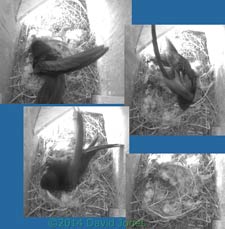
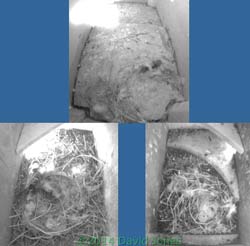
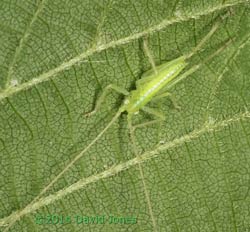
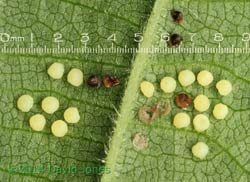
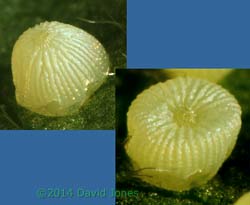
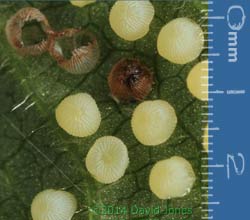
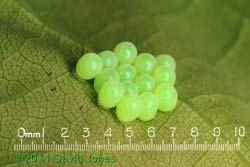
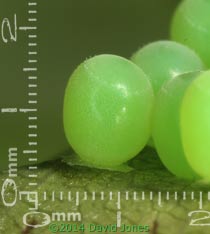
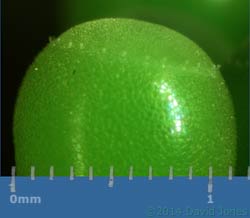
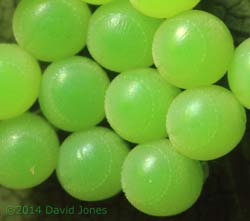
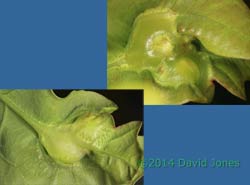
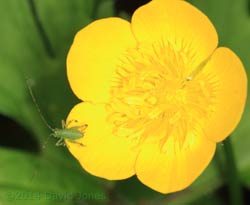
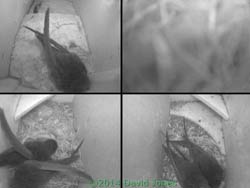
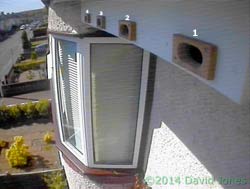
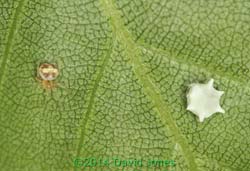
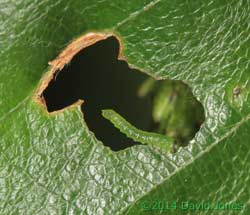
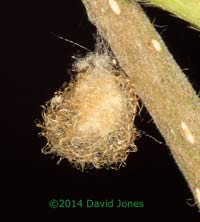
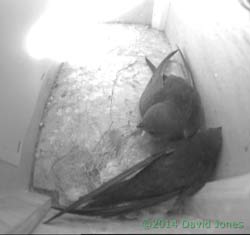
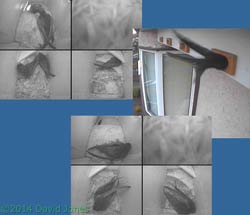
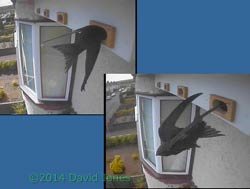
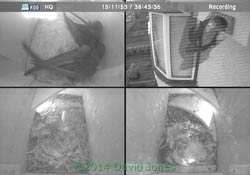
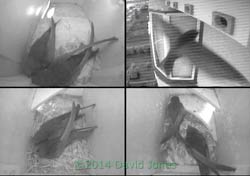
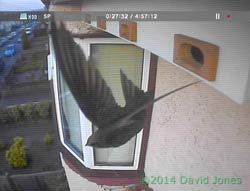
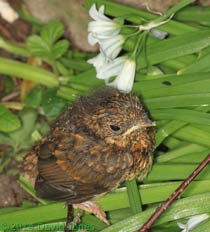
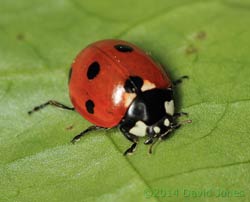
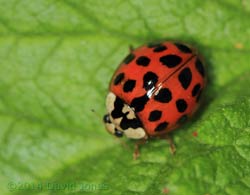
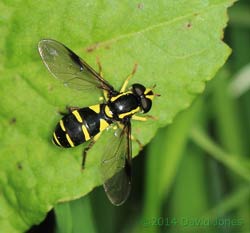
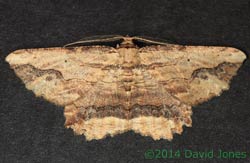
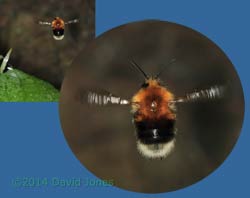 At
the beginning of the month I mentioned that the only Sow-thistle plant in
the garden had started flowering. Since then it has grown significantly and
now has numerous flowers. However, the bee wasn't interested in these.
Instead it spent prolonged periods flying around the lower parts of the
plant at high speed, occasionally leaving to rest on another plant nearby.
At
the beginning of the month I mentioned that the only Sow-thistle plant in
the garden had started flowering. Since then it has grown significantly and
now has numerous flowers. However, the bee wasn't interested in these.
Instead it spent prolonged periods flying around the lower parts of the
plant at high speed, occasionally leaving to rest on another plant nearby. 